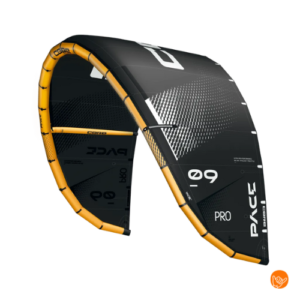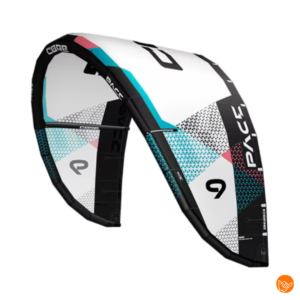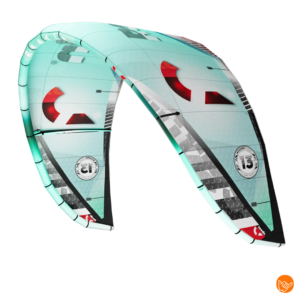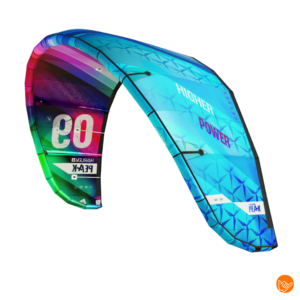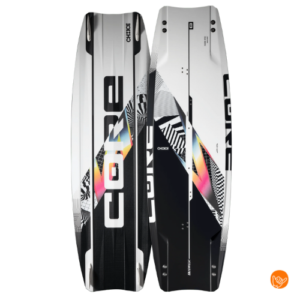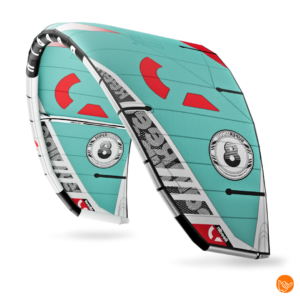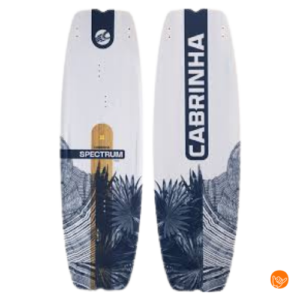Renting a kiteset for beginners works through various options such as day rentals, subscriptions or local kitesurfing schools. You get a complete set consisting of kite, bar, lines, harness and board for a predictable monthly fee. This eliminates the high purchase cost and allows you to try out different brands and sizes before possibly purchasing.
What exactly is a kiteset and what do you need as a beginner?
A complete kite set consists of six essential components: the kite itself, a control bar, lines, a harness, a kiteboard and a wetsuit. For beginners, these are all the necessary components to safely kitesurf without purchasing additional accessories.
The kite is the most important component and determines your experience on the water. Beginners usually need an all-around kite that flies stably and forgives mistakes. The control bar and lines are your direct connection to the kite and contain crucial safety systems.
The harness distributes forces across your body and prevents fatigue during longer sessions. For beginners, a seat harness is often more comfortable than a waist harness. The kiteboard should be appropriate for your weight and skill level, with larger boards offering more stability.
Optional accessories such as impact vests, helmets or special kitesurfing shoes can be useful, but are not essential for your first experiences with kitesurfing. As a beginner, focus on mastering the basic gear before investing in additional gear.
How much does it cost to rent kitesurfing equipment for beginners?
Kitesurfing equipment rentals cost between €17 and €77 per month through subscription services, depending on the type of kite and brand you choose. Day rentals at local shops usually range between €50-80 per day, while weekend packages cost around €120-180.
With subscription models, you pay a predictable monthly fee and get access to premium brands such as CORE, Naish, Cabrinha and Slingshot. Beginner-friendly options like the Cabrinha Spectrum start from €17 per month, while more advanced kites like the CORE Air can cost up to €77 per month.
The cost advantages of renting versus buying are significant for beginners:
- A new kiteset costs €2000-4000 to purchase
- Renting gives access to latest models without depreciation
- Opportunity to try different brands and sizes
- No maintenance costs or repairs at your own expense
- Flexibility to quit without loss in case of diminished interest
Many providers also offer insured gear with limited deductible, providing extra security for novice kitesurfers still learning to handle the equipment.
How to choose the right kit size and board as a beginner?
The right kite size depends on your body weight, wind conditions and experience level. Beginners usually need a kite between 9-12 square feet, with heavier individuals or lighter winds requiring larger kites for sufficient power.
As a rule of thumb for beginners:
- At 10-15 knots of wind: 12-14m kite for persons of 70-80kg
- In 15-20 knots of wind: 10-12m kite for the same weight class
- At 20-25 knots of wind: 8-10m kite for experienced beginners
- Add 1-2m at lighter body weight under 65kg
- Subtract 1-2m at heavier body weight above 85kg
For board selection are larger boards ideal for beginners because they offer more stability and buoyancy. A board between 135-145cm length and 40-42cm width gives sufficient control during the learning process.
Twin-tip boards are the best choice for beginners because you can ride in both directions without flipping the board. Directional boards are more suitable for advanced riders who want to develop specific riding styles.
Many rental services offer customized advice based on local wind conditions and your personal specifications, which is especially valuable during your first few months with kitesurfing.
Where can you reliably rent kitesurf gear in the Netherlands?
In the Netherlands, you can rent kitesurf gear through local kitesurf shops, specialized online platforms, kitesurf schools and flexible subscription services. Each has specific advantages depending on your needs and experience as a beginner.
Local kitesurf shops offer the advantage of personal contact and direct service. You can physically inspect the gear and often get local advice on wind conditions and kitesurfing spots. However, availability can be limited, especially in high season.
Online subscription services offer more flexibility and often better prices. For example, we offer access to premium brands with monthly cancellation and full insurance. This model suits beginners who want to try out different kites without long-term commitments.
When choosing a reliable provider, you should check:
- Condition and age of equipment offered
- Presence of insurance and deductible amounts
- Flexibility in rental periods and termination terms
- Availability of different sizes and brands
- Quality of customer service and technical support
Kitesurfing schools often combine rentals with lessons, which is ideal for absolute beginners who are new to the sport.
What safety checks should you do on rented kite equipment?
Before going out on the water with rented kite equipment, always conduct a thorough safety inspection of all components. This will prevent dangerous situations and ensure a safe kitesurfing session.
Check the kite for cracks, holes or worn seams, especially at the leading edge and wingtips where there is the most stress. Inspect all valves and check that they close properly without losing air.
For the bar and lines, this essential checklist applies:
- Test all safety release systems multiple times
- Check lines for fraying, knots or weak spots
- Verify that all lines are the correct length
- Inspect bar and chicken barrel for wear
- Test the depower function by sliding the bar fully in and out
The harness should close securely without damaged buckles or worn straps. Check that the hook functions properly and has no sharp edges that could damage lines.
With the kiteboard, watch for cracks in the board itself and check that all the footstraps (straps) are securely fastened. Loose screws or damaged inserts can be dangerous while sailing.
In doubt about the condition of any part? If so, always contact the rental company before heading out on the water. Reliable providers appreciate your caution and offer quick replacements for questionable equipment.
Renting a kiteset offers beginners the perfect opportunity to discover the sport without major financial risks. By choosing the right rental company, conducting thorough safety checks and selecting appropriate equipment, you can begin your kitesurfing adventure safely and cost-effectively. Whether you choose day rentals or a flexible subscription, the important thing is that you get access to quality, well-maintained gear that suits your skill level and ambitions. For more information about our flexible subscription options, the putting together your ideal set or personal advice, you can always contact us.













